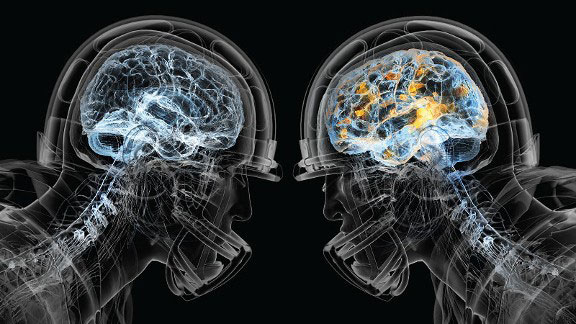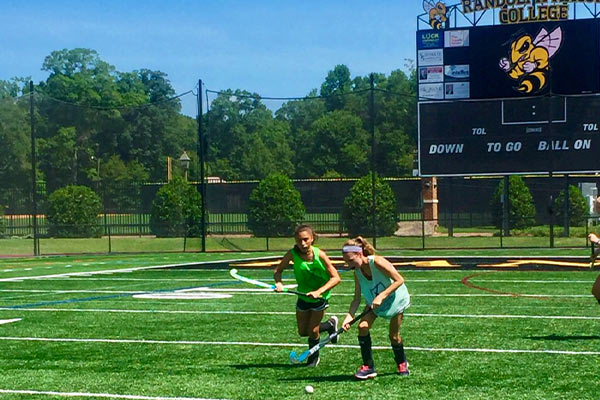5 Concussion Myths For Every Coach, Parent And Child

There are two million of reported incidents of concussions per year in the US. With a push to minimize the risk of long term injury in athletes, several common myths about concussions keep resurfacing. The unstoppable Science Ninjas of SISU set out to bust these myths:
#1 Every Collision Leads To A Concussion – FALSE
Here’s is why: Concussion causing force is hard to measure. Even with new bio-metric technology coming on the market, it is difficult to measure the force of impact that may cause a concussion, because there is no set standard. While high forces do not always cause injury, low forces may inflict heavier damage.
What to do: The University of Michigan’s exceptional brain trauma unit put together an excellent educational video about concussion facts. We recommend parents and coaches watch this video to educate themselves on facts about concussion and safety practices for athletes of all ages. In short, always follow the 3Rs:
#2 Better Helmets And Mouth Guards Will Prevent Concussions – FALSE
Here is why: Simply put, there is no good evidence. Helmets of any type (hard shells, soft-padded or head bands) can help reduce the force of impact, but there is no evidence that they can prevent or reduce the risk of concussions. Hard helmets can reduce the risk of more serious head injuries (bleeding, skull fractures etc.) and should be worn in high risk sports.
Mouth guards can prevent dental injuries and should be worn for sports with a high risk of these injuries. While some of these sports, such as Lacrosse or Football require the use of mouthguards, others, like Rugby for example, do not currently mandate the use of guards, despite the overwhelming injury rates.
What to do: Educate your kids on safer practices. Risk reduction may be possible in some settings with rule changes (e.g. no hitting from behind in hockey) and behavior changes (e.g. tackling technique in football).
#3 One Concussion Will Always Lead To Another One… MAYBE!
Here is why: The jury is still out. There appears to be an increased risk of recurrence in the first few weeks after a concussive injury. A recent European study also showed that concussion increased the subsequent risk of overall injuries in the next year. it is unclear, however, what factors may influence the risk of another injury. There are so many variables, that it is currentlydifficult to draw conclusions. Once thing is clear, an injured athlete who has not fully recovered, will have a higher risk of re-injury.
What to do: Don’t put them back in play too early. Being active before giving the brain a chance to fully recover is a serious health risk that may result in permanent brain damage. A player who sustained a blow, should never return to play the same day. In fact, 49 state laws prohibit it. Every concussion is a unique situation and should be treated on a case-by-case basis. Factors that help determine recovery time are the following:
• The symptoms the player has
• The player’s medical history
• The player’s concussion history
• The player’s medicine use
• The type of sport and the position played
• The player’s ability to stand and keep his or her balance
• The player’s ability to pay attention and to answer questions that test learning and memory
• How quickly the player can solve problems
#4 Keep Them Awake, Or They Slip Into A Coma! – FALSE
Fact: Sleep is actually the best thing a concussed person can do to aid recovery. According to the Dartmouth College of Sports Medicine, it’s fine for a person to go to sleep after a concussion as long as someone wakes them up every two hours to check for the following symptoms:
• Persistent nausea, or vomiting more than twice
• Weakness or numbness in the arms or legs
• Unusual sleepiness or decreasing alertness
• Bleeding or drainage of fluids from ears, nose, or mouth
• Trouble walking or speaking
• Difficulty waking from sleep
• Seizures
• Dilated pupils or pupils of different sizes
• Changes in behavior (eg, confusion, restlessness, irritability, lethargy)
• Severe or progressive worsening headache
• Misshapen deformity of the skull
Although most sports related concussions are mild, there is always potential for life threatening conditions (such as lucid intervals or internal bleeding) to appear up to days after impact. The reality is that sleep alone isn’t going to cause any damage, but not being able to wake up may indicate that severe damage has already been done.
What to do: It’s important to know when a head injury goes beyond a concussion and medical attention is required. Following a concussion, take the person to the hospital immediately!
#5 If They Are Conscious, They Can Play! – FALSE
Fact: Less than 10% of concussions actually result in a loss of consciousness. It is a common misconception that there has to be a loss of consciousness (LOC) in order for the brain to be injured, but It is just one of the many signs of a concussion to look out for. The fact is that concussions have a wide range of symptoms and severity.
What to do: Remember that the symptoms may take minutes, hours or even days to manifest, so:
WHEN IN DOUBT- TAKE THEM OUT!



